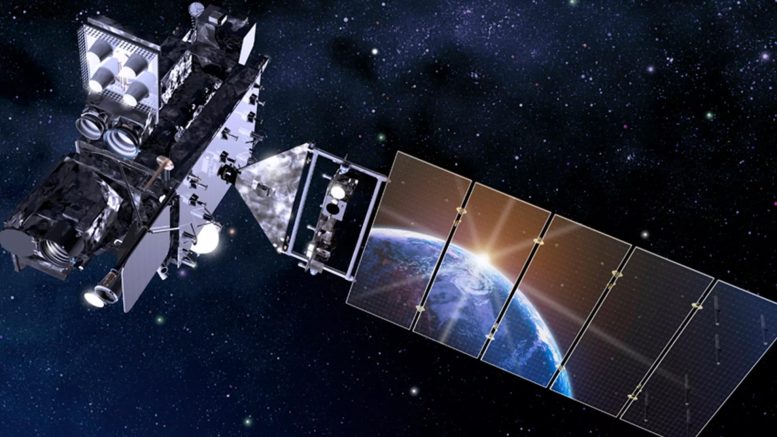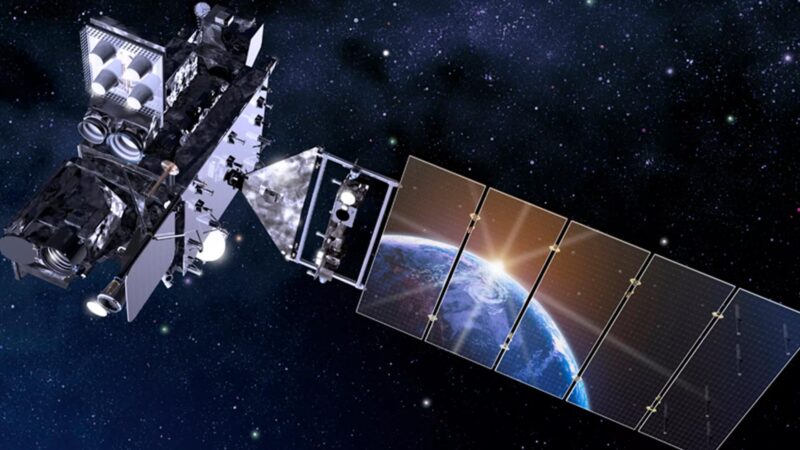
Le satellite GOES-T de la NOAA est le troisième satellite de la série R des satellites géostationnaires opérationnels d’observation de l’environnement (GOES), le système d’observation météorologique et de surveillance de l’environnement le plus sophistiqué de l’hémisphère occidental. La série GOES-R fournit des images et des mesures atmosphériques avancées, une cartographie en temps réel de l’activité des éclairs et une surveillance de la météo spatiale. Crédit : NOAA
Lancement d’un nouveau satellite d’observation de la Terre, poursuite de la mise en place du télescope spatial James Webb et imagination de l’avenir de l’aviation… voici quelques-unes des histoires à vous raconter – Cette semaine à l’adresse suivante NASA!
Lancement d’un nouveau satellite d’observation de la Terre …
Les choses continuent de s’aligner pour le James Webb Space Telescope …
And imagining the future of aviation … a few of the stories to tell you about – This Week at NASA!
NASA Supports Launch of NOAA Weather Satellite
“Liftoff of NOAA’s GOES-T. Our newest weather sentinel in the sky, to help keep us safe here on the ground.”
On March 1, we supported the launch of NOAA’s GOES-T satellite from Cape Canaveral Space Force Station in Florida. GOES-T is the third satellite in the Geostationary Operational Environmental Satellites or GOES-R series. It will eventually be renamed and placed into operation as GOES West, to provide continuous coverage of weather and severe environmental conditions in the Western Hemisphere. The GOES program also predicts space weather near Earth that can interfere with satellite electronics, GPS, and radio communications.
Webb Mirror Alignment Continues Successfully
The James Webb Space Telescope team continues to work through the various phases of mirror alignment needed to perfect the observatory’s focus. The team recently completed the Segment Alignment and Image Stacking phases. During these phases, they first moved Webb’s mirror segments so that 18 scattered dots of starlight reflected from the same star were rearranged into Webb’s signature hexagonal shape. The focused dots were then stacked on top of each other, delivering the photons of light from each mirror segment to the same location, on the sensor of Webb’s NIRCam instrument. In the coming weeks, the team will work to make the single dot of starlight progressively sharper and more focused.
Virtual Future of Aviation Showcase
On March 1-3, we hosted imaginAviation – a virtual event that showcased the future transformation of aviation. The three-day event featured our Deputy Administrator Pam Melroy and others discussing NASA’s efforts to improve the sustainability of aviation, while contributing to the Biden-Harris Administration’s efforts to tackle climate change. It was also an opportunity for participants to learn how NASA aeronautics projects and technologies are building a safer flying experience for all.
First Work Platforms Retracted Ahead of Artemis I Rollout
Inside the Vehicle Assembly Building at our Kennedy Space Center, teams have retracted the first of the 20 work platforms surrounding our Artemis I Moon Rocket. The platforms, which enable crews to work on the Space Launch System rocket and Orion spacecraft, have been moved in anticipation of rolling out the integrated spacecraft to the launchpad ahead of the uncrewed Artemis I mission around the Moon. The four-mile trek to the launchpad is currently targeted to begin on March 17.
That’s what’s up this week @NASA



